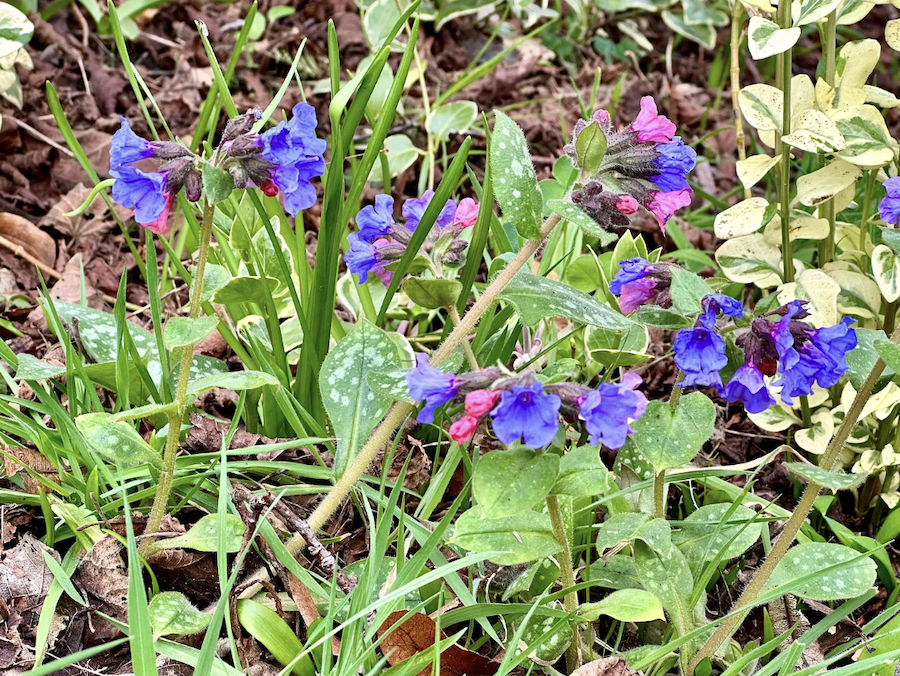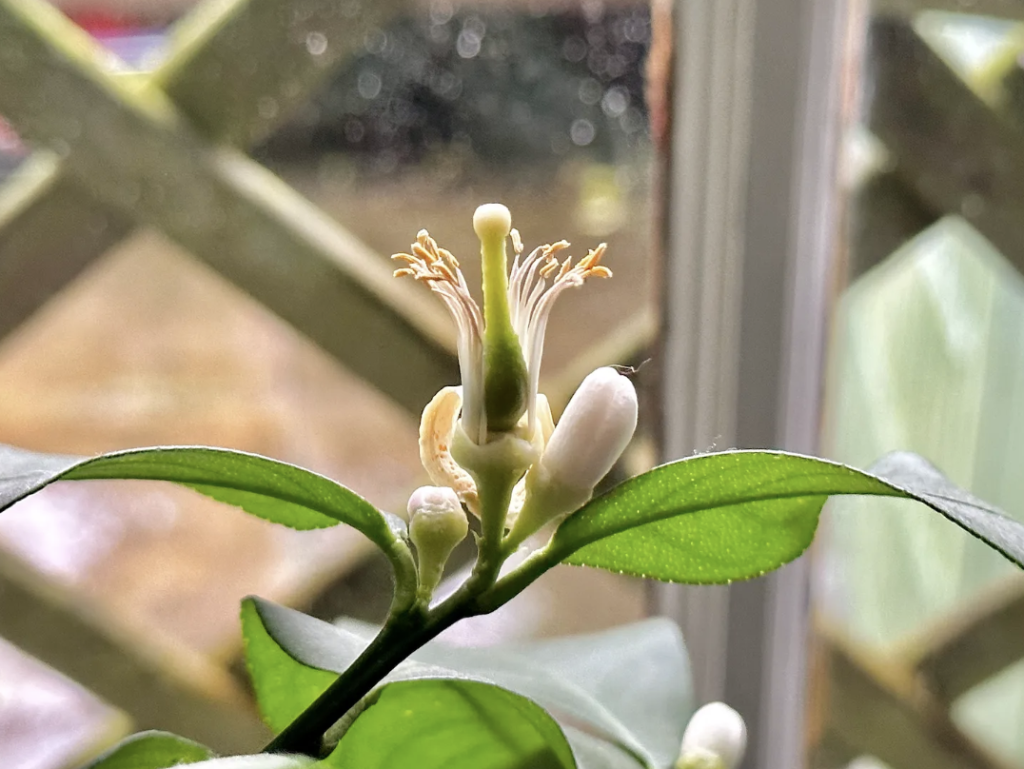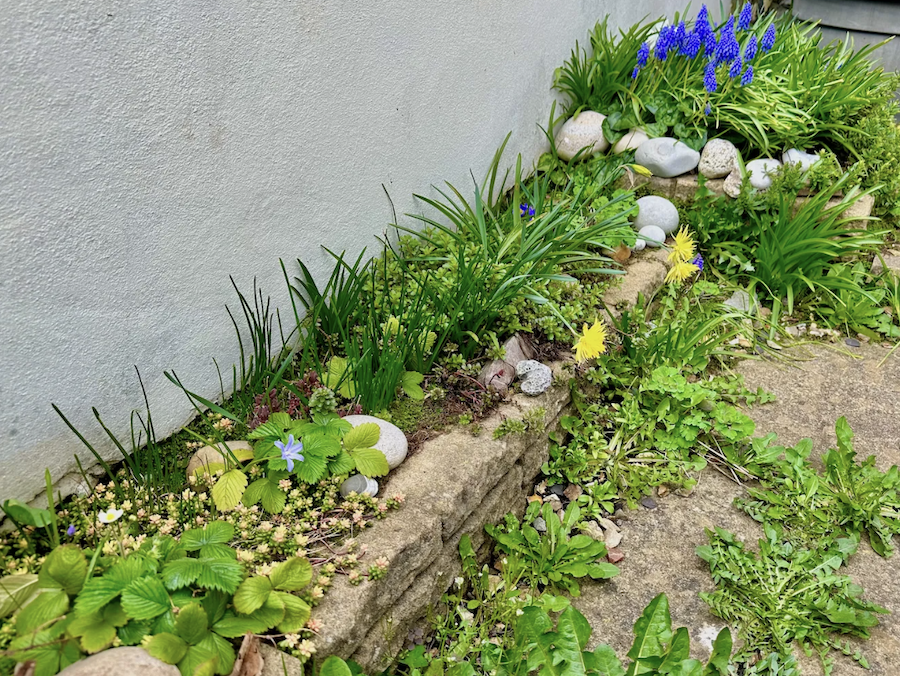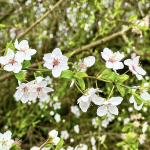On emergence
Good morning! It’s a gloomy, windy Saturday here in Bristol, so I hope you are warm and possibly enjoying more sun than we do.
After a day of work in the allotment, I am back home watching the rain… on the one hand, I would like to be out there, digging away in the sun. On the other hand, I am happy that the bushes I moved to the allotment have a lot of rain to establish their roots without interruption. March can feel very confusing, so I am trying to be patient. When the sun comes out, I take my lunch to the garden. When the rain returns, I wrap up under my blankets or garden indoors instead.
My tomato seedlings are still alive, which is a massive success for me (I hope I am not jinxing it…). My artichoke seeds came up, so I have a vast collection to nurture and, later in May, plant out on the allotment: I dream of a bed full of artichokes! I managed to grow one chilli plant, but the seedling is tiny, so I may have to try again. I managed to grow tiny Chinese Forget-Me-Nots and straw flowers – I do hope I can nurture them enough to enjoy the large plants in summer. Our Reel Seeds cucumbers came out strong, too, so I must move them today.
Our peas are ready to be planted outdoors – I am just waiting for the last few colder nights to pass this week (yes, I have invested in a weather app). This will come as a surprise for those who know me personally: despite my strong resistance to following instructions, I am now actually following them, reading about the best tips to grow things and learning loads. Peas need soil prepared a few days in advance, shaded space and a bit of support. So we plan to study the small, 50 cm wide area between our allotment shed and greenhouse to nest all our peas plants there. I hope to re-seed them all summer, so we should have a steady supply. It’s exciting to read that peas contain many nutrients, so now I feel pretty motivated to make this little project happen. I am not going to lie, I often garden purely for the visual result, so I chose two types of peas – with green and purple pods.

Even with the warm weather still on the horizon, spring is in full swing everywhere I look, so it is a time of emergence. This week, I spent some of my volunteering time helping our newly formed Therapy for Social Change Network. It’s interesting to watch and participate in complex, collective emergence. It’s vibrant, sometimes even shocking, but mostly organic. To me, at least, the word means: naturally emergent, fluid, growing and forming. That growth requires a dedicated space, a container, nutrients, energy, feed, and seed. The seed is, of course, the most important. That is the catalyst. However, there are many core factors to the initial and then future growth. Sometimes growth comes with limitations, and sometimes we need to have a bit of conflict and resolution to notice our boundaries, heal and grow again.
It reminds me of our Spanish lemon tree. When she arrived in a large box, some top branches were trimmed to fit the box and travel safely. Let’s face it: when feels cruel at first, made her trip to us possible in the first place. Now, her branches are growing again. Once grew directly in the place of the old one, but others grow out of the “wound”, and those have multiplied. I feel that, ultimately, the tree will have a richer structure thanks to the pruning. And none of those drastic measures stopped her from blooming and now forming her first lemon fruit.

Emergence also means complexity, and that’s okay. We need to embrace it. Sometimes, we may think there are too many voices in a movement or too many opinions in a family. However, everyone needs to feel safe and consider if the space is to be nurturing. To me, emerging movements are like gardens: there is space and a role for everyone. Even if we may need to set some boundaries and define a few guiding values, it’s possible to start work allowing people to get on with their ideas. Because movements, like Nature, are centred around emergence (Rogers, who grew up on a farm, called it an “actualising tendency” in his person-centred theory). As things start to happen and form, we can see what additional action and support may be required.
I think of our front garden. Since we moved here, I had no heart to use strong chemicals to eliminate the gorgeous dandelions. They are pretty helpful at times (especially in early spring and late autumn when insects need more nutrients and all other flowers are gone). And so I tend to this space organically. I planted a few new plants, and when dandelions get too large, I trim them knowing that they will come back in their own time without spreading their seeds to the neighbouring gardens. This requires a little bit of attention, but not a lot – just a second of a slight pause before I put the key in the door. The more challenging idea is to accept and embrace the emergence instead of control or perfection.

Reflection
Today I invite you to practice emergence and letting go of control. You can benefit from this approach, especially when you are struggling with creative blocks and don’t know how to start to blog or post online. Practice doing things without knowing how they may shape up. For example:
- Take a pen and piece of paper and start writing – remember, it’s the act of writing that’s important, not the message. If needed, start by saying: “I am starting to write and have no idea what to write about; this feels weird…” and continue with anything that comes up. Use punctuation to mark silences and moments of hesitation. List things. Draw and doodle. If you need one, set an intention before this exercise: “I want to explore a trigger from work or something someone said to me this week.”
- Do the same, but digitally and notice what is different in the process.
- Post an image with an emoticon on a social media channel without text. Look at it and notice if this conveys how you feel.
- Try movement: stretch, continue, and see where the movement takes you. Maybe you can do a little dance?
(Enjoy experimenting with emergence while I will tend to those little cucumber seedlings today. Have a light weekend!)
This post was originally posted on Substack in our Syl’s Liberation Psychologies Newsletter.

